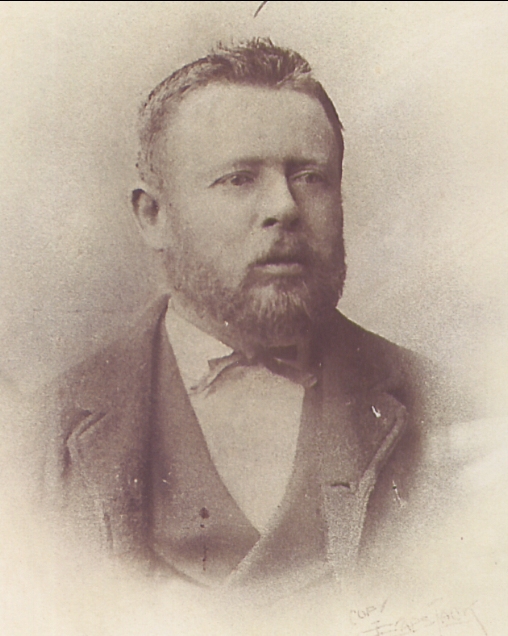
Jonathan Rowlands"

1880
Jonathan Rowlands (1848 - 1917) was Mary's husband - see 141.3
see 141.1 for more family information
My grandfather, Jonathan Rowlands, was an engineer and pioneer of Buckley Iron and Brass Foundry (around 1868/70) where he designed and made machinery. He was known as the Buckley Pioneer because of this. The company was a manufacturer of castings and designer of machinery, mainly for local industries. There was a brick-making machine at the Lane End Brickworks made and designed by him which was used until it closed. Lead shot and canon balls were made prior to the machinery making by my grandfather.
He married Mary Fletcher and they lived in a house at the entrance to the foundry yard where their family of ten children were born and raised. (The house later became an office.) There were five boys and five girls. One of the boys, Albert, who was born in 1880 was only five years old when he was tragically killed in an accident in the foundry. Another son, Edward, decided to become an insurance broker (and went to live in Blackpool Lytham St Anne's). The remaining children stayed to become part of Buckley Foundry, even the girls had their work to do.
The three boys served their time in different fields:
Arthur, my father, became a fitter - turner engineer
Jonathan - a moulder engineer
Harold - a pattern maker until his death when only twenty years old.
Their daughters were Hannah, Jane (Ginnie), Sarah (Sally), Mary (Polly) and Martha (Patty).
Ginnie became landlady of the White Lion in Penymynydd, now derelict (4.2005).
see also 141.1
In about 1914, the foundry took on a large contract to design and manufacture some machinery for a firm in Dublin, Ireland. On completion of the equipment's manufacture, a ship was hired together with a team of about twenty engineers and helpers to transport and erect the machinery on site.
On arrival in Dublin, Jonathan was informed that the firm who had ordered the machinery had gone bankrupt, and as a consequence the machinery was worthless. It appears the cause of bankruptcy was due to a combination of factors not least the onset of World War 1 and the uncertainty of business continuity.
It soon became apparent that Jonathan had taken a massive risk, having invested most of his wealth in the venture. He was now broken and penniless. He could not afford to transport the machinery back home and had no alternative but to ditch the whole consignment into the Irish Sea.
The Beavan family took over the foundry from him and Austin Iball from them. Mr Iball was manager in 1950s and 1960s.
Engineering talent runs in the family: I ran my business as "ARTHUR ROWLANDS
Electrical Engineer." (see 4.5) My nephew, Keith, was a marine engineer.
My mother was a Sharratt: this family ran the Pottery later known as Lamb's Pottery. John Sharratt had a son called Moses. The "Lady Broughton" chimney pot was designed by Moses Sharratt, as was the font, mentioned below.
When the programme "What's my line" was on the television, Sir Mortimer-Wheeler displayed something which was said to have been made in Flintshire. It turned out to be a replica of the clay font made by my grandfather at the pottery for the nearby Brunswick Wesleyan Methodist Chapel, now demolished and the site of the foundry offices and a car park. The old basin used for christenings was replaced by this new font. A replica is now in the Chester Grosvenor Museum. The original is still in the family.
Author: Rowlands, Arthur
Tags
Year = 1880
Gender = Male
People = Single
Extra = Formal Portrait
Extra = Pre 1900
Copyright © 2015 The Buckley Society